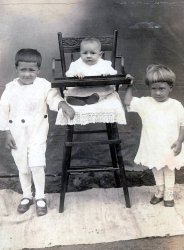
MAY CONTAIN NUTS

Search Shorpy
SHORPY ART

Framed or unframed, desk size to sofa size, printed by us in Arizona and Alabama since 2007. Explore now.
Join and Share
Ad-Free Shorpy
Shorpy is funded by you. Patreon contributors get an ad-free experience.
Learn more.

Recent comments
- Details, Details
- What's that building to the left of the tower?
- Coal Barges
- Bromo-Seltzer
- Inner harbor
- The Basin
- What a headache!
- Giant stepladder?
- Baldwin 62303
- Baldwin VO-1000
- Cold
- No expense spared
- Tough Guys
- Lost in Toyland
- And without gloves
- If I were a blindfolded time traveler
- Smoke Consumer Also Cooks
- Oh that stove!
- Possibly still there?
- What?!?
- $100 Reward
- Freeze Frame
- Texas Flyer wanted
- Just a Year Too Soon
- WWII -- Replacing men with women at the railroad crossing.
- Yes, Icing
- You kids drive me nuts!
- NOT An Easy Job
- I wonder
- Just add window boxes
Member Photos
The Shorpy
Print Emporium
Print Emporium
Search Shorpy
Search results -- 30 results per page
- Quitting Time: 1911
- ... of the day, just up from the shaft at the Pennsylvania Coal Company's South Pittston mine. Smallest boy, next to right hand end, is a ... by Lewis Wickes Hine.
(The Gallery, Kids, Lewis Hine, Mining) ... Posted by Dave - 12/10/2007 - 2:12pm -
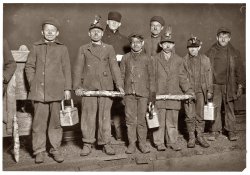
- Perfection Kerosene: 1939
- January 1939. "Abandoned store in which coal miner on relief lives. Zeigler, Illinois." Medium format negative by ...
(The Gallery, Arthur Rothstein, Mining, Stores & Markets) ... Posted by Dave - 06/26/2019 - 12:52pm -
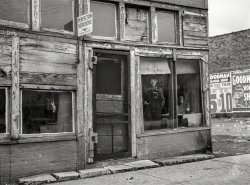
- Striking Portrait: 1939
- "Coal miner during May 1939 strike. Kempton, West Virginia." 4x5 acetate ... out the number on this one.
(The Gallery, John Vachon, Mining) ... Posted by Dave - 08/12/2017 - 9:31am -
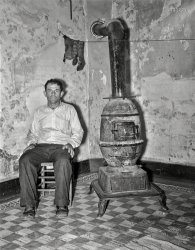
- Generations: 1938
- September 1938. "Mother-in-law of unemployed coal miner and his child. Marine, West Virginia." Photo by Marion Post Wolcott. ... Very powerful.
(The Gallery, Kids, M.P. Wolcott, Mining) ... Posted by Dave - 10/14/2015 - 9:27pm -
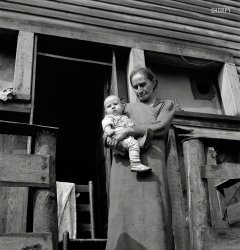
- Our Parents: 1936
- ... metal tower supports the lifting mechanism for access to a coal mine shaft. You can see the sheaves for the lifting cables at its top. ... it, which makes me wonder if this was related to an active mining operation.
By the way, the former Westmoreland County Volkswagen ... Posted by Dave - 06/09/2019 - 12:09pm -
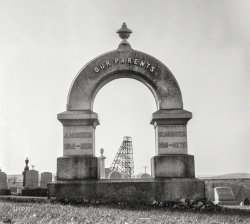
- Alabama Stop: 1937
- April 1937. "Coal miners' housing in Birmingham, Alabama." Photo by Arthur Rothstein for the ... size.
(The Gallery, Arthur Rothstein, Birmingham, Mining) ... Posted by Dave - 02/25/2017 - 3:15pm -
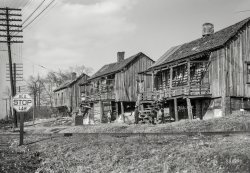
- Lightheaded Bros: 1940
- September 1940. "Sons of Mr. Britton, coal miner-farmer near Falls Creek, Pennsylvania, and member of Tri-County ... served in the Army in WWII.
(The Gallery, Jack Delano, Mining) ... Posted by Dave - 05/04/2019 - 10:29pm -
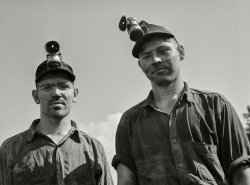
- Rollfast Redux: 1959
- ... size.
That's a beauty for sure Living in the coal mining town I grew up in in the 50's and 60's.
A bicycle that nice would get ... Posted by jckazoo - 02/04/2018 - 11:11am -
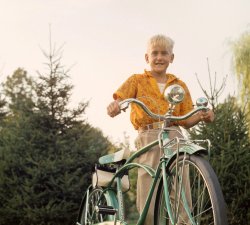
- Sweet Snuff: 1938
- ... 1938. "Express Agency office and general store in coal mining town of Scotts Run, West Virginia." Photo by Marion Post Wolcott. View ... Posted by Dave - 06/23/2016 - 11:12am -
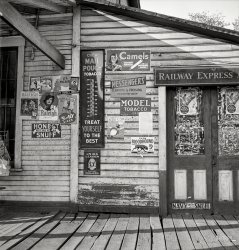
- Upper Chunkers: 1940
- ... was also a name for the canal boats that carried the coal from this area to market.
Turnaround Mauch Chunk was a gritty ... town. Unfortunately not all of Pennsylvania's mining and manufacturing past has made a successful transition to the present. ... Posted by Dave - 07/03/2017 - 1:58pm -
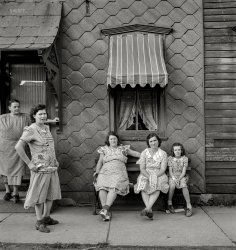
- Life With Father: 1941
- ... served, he stayed home.
WW2 My father was a coal miner in WV and did not serve.
As we later learned, mining was almost as dangerous as the war.
(The Gallery, Kids, Russell Lee) ... Posted by Dave - 05/19/2019 - 12:36pm -
![Life With Father: 1941 May 1941. San Diego. "Family living at Kearney Mesa defense housing project. This man came to California from Oklahoma 10 years ago. He has been an agricultural worker living in various FSA camps. Now employed as a painter at Consolidated Aircraft." Acetate negative by Russell Lee for the Farm Security Administration. View full size.
I married Mom?Maybe it's the hairstyle, but does anyone else think the woman looks to be much older than her husband?
What Comes Next?The photo and description begs so many questions. Did he fight in the war? Did he earn enough at Consolidated to buy her a wedding ring? Was he ever injured in an Oakland car accident? Whatever the answers, I hope they lived with few regrets and pride in their children.
ON Kearny MesaThe Kearny Mesa section of San Diego is at higher elevation than much of the city itself. Many valleys and hills in the area, thus the term 'mesa'. Picky oldtimers who know best refer to it as ON Kearny Mesa as opposed to IN. BTW, I have much family still in nearby Linda Vista (yet another common SHORPY topography reference) and my mother was in the first graduating class at Kearny High (on Kearny Mesa). Go Komets!
[You might live "on" Kearney Mesa, but you live AT the Kearney Mesa Defense Housing Project. - Dave]
Mom?If there’s one thing I’ve learned from Shorpy (amongst many, actually), it’s that women in the 1930s and 40s look a helluva lot older than they actually are. (And is it just me, or do her eyes seem to float in two entirely different planes?)
Military? Perhaps not.As Dave has pointed out, many men did not serve in the military in WW II. As a father with two children, working in what likely became a defense plant, he may have been kept stateside. My father was a supervisor at a GM factory in Michigan and while his brothers served, he stayed home.
WW2My father was a coal miner in WV and did not serve.
As we later learned, mining was almost as dangerous as the war.
(The Gallery, Kids, Russell Lee)](https://www.shorpy.com/files/images/SHORPY-8c01333a.thumbnail.jpg)
- Carbon County: 1940
- ... "Street in Upper Mauch Chunk, a small historic coal mining town in the Lehigh Valley." Medium format negative by Jack Delano for ... Posted by Dave - 11/19/2018 - 10:26am -
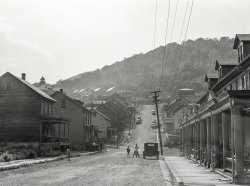
- Full Steam Ahead: 1913
- ... canal, this operation showed the way to large open pit mining that followed in places like Utah and Minnesota. The same equipment was ... The same railroad that took the rock away also delivered coal and water to the shovels and drills. In normal digging the shovel was ... Posted by Dave - 08/18/2014 - 4:59pm -
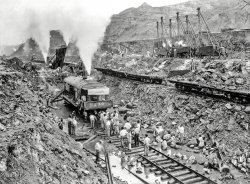
- Nitshill Scotland
- ... ago, Much different from then, When there would have been coal mining & lime works locally Nowadays an urban sprawl being re developed ... Posted by Cezhart - 09/17/2007 - 9:47pm -
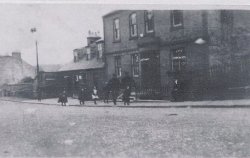
- Young Pilot: 1954
- ... is resting his bad leg, which was injured in a copper mining accident in the Upper Peninsula. Others include my grandmother, mother, ... in their best every Sunday. My grandfather was a retired coal miner with accident-injured legs also, but he made Sunday his "day of ... Posted by UpNorthBob - 04/21/2012 - 7:14am -
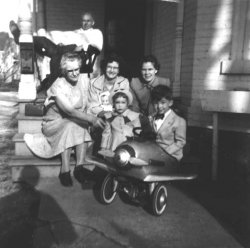
- Uncle Joe's Christening
- This was taken in the coal mining town of Lake Trade, Pa in 1921. My uncle Joe was the baby in the middle ... Posted by mary catherine - 01/15/2012 - 3:24pm -
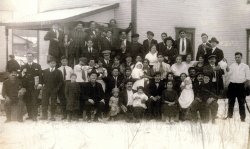
- Tony and Joe in 1923
- ... time. She had 6 boys in 10 years. This was taken in the coal mining town of Lake Trade, Pa.
(ShorpyBlog, Member Gallery) ... Posted by mary catherine - 01/17/2012 - 1:53pm -
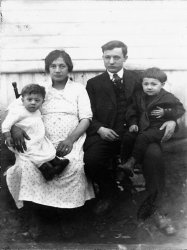
- Tony Grenci: 1920
- My father about one year old in the coal mining town of Lake Trade, Pa. It was south of Eau Claire and right next to ... Posted by mary catherine - 01/15/2012 - 3:45pm -
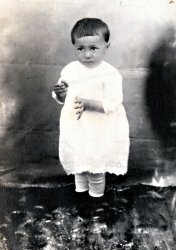
- Tony Mario Joe Grenci in 1924
- ... A picture of my dad Tony and his two brothers in the coal mining town of Lake Trade, Pa.
(ShorpyBlog, Member Gallery) ... Posted by mary catherine - 01/15/2012 - 2:38pm -
